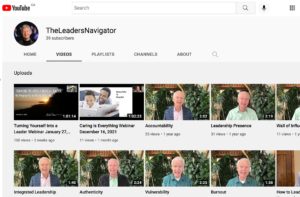Accountability With Heart: Igniting Engagement Through Trust and Ownership
When Brenda took over as the Executive Director of a community outreach, nonprofit organization, she walked into a team that had lost its spark. People were burned out. Staff meetings were tense. Deadlines constantly slipped and a sense of defensiveness hung in the air. At first, Brenda responded the way many leaders do under pressure—by tightening control. She introduced stricter reporting requirements and frequent check-ins. However, instead of improving performance, morale sank further. One afternoon, after a particularly difficult meeting, a colleague quietly took her aside and said, “We don’t need more tightening—we need more trust.”
This was a defining moment for Brenda, a moment that brought her to reach out and connect with me for coaching. “How could I actually make this request real?” she asked me in our first session.
Together we developed a plan – a plan Brenda has given me permission to share in this article. Below is a high-level overview of her implementation:
- One-on-one meetings with every one of her key leadership team members. The purpose was not to correct but simply listen. She asked them about their personal values and how they could feel more supported to live their values at work and away from work. They talked about how each person could be more supported to bring their unique abilities and passion more fully to their work. She talked to them about their defining moments growing up that led them to this work, and about why they decided to work here. She explored with them the kind of culture they wanted to work in and what actions would need to happen to start to live the organization’s espoused values.
- Assess fit. In these one-on-one meetings (for some she met more than once), Brenda also discussed their experience of being on the leadership team and what needed to happen to create a place people were proud to work. In these conversations she discovered there was one member that simply didn’t fit into the culture. Through exploring and recognizing that his strengths and approach didn’t align with the organization’s values or direction, she helped him create space to thrive elsewhere and moved him on, in order for the team to move forward authentically.
- Establish a team charter. Within three months of arriving, Brenda set aside a day with her entire leadership to ensure that they put a priority on the health of that team. To achieve this, they took time to share their values, to get to know people at a more personal level, and pinpoint the expectations team members had of each other. A “team charter” was written, a list of agreements and a process for responding when those agreements were dishonoured. The outcome was a blueprint for creating a team they were committed to, a culture that would enable them to do their best work, and mutual agreements that would inspire a place they were proud and grateful to work in. They also made agreements about how to extend the same kind of process to their respective teams.
- Rigid, controlling oversight was replaced with clear expectations and accountability agreements to each other. All this was balanced by genuine care. Self-care became a high priority in the organization to ensure the care they had for their own teams and the clients they served came from overflow, not emptiness.
The results, over a period of a few months, were transformative. People began taking initiative. Energy and engagement improved. Meaningful results began to emerge, signaling that important progress was finally taking shape.
The heart of accountability lies not in control, but in connection. True ownership flourishes when people feel seen, trusted, and valued for the whole of who they are. Trust transforms accountability from a system of enforcement into a relationship of commitment. When leaders embody warmth and integrity, they invite others to bring their best selves forward—not because they have to, but because they want to.
Too often, accountability in organizations is equated with surveillance or blame. But leaders who lead with heart understand that accountability is ultimately about stewardship. It means caring enough to follow through and having the courage to be honest—with oneself and others—about where improvements are needed. It also means creating psychological safety, so feedback is welcomed, not feared.
Ownership, in turn, is the natural outcome of trust. When people take ownership, they stop working for an organization and start working with it. They see success as a shared creation rather than a metric imposed from the top. This kind of engagement can’t be mandated; it must be cultivated. And it grows best in environments where empathy coexists with high standards, and where mistakes are treated as learning moments, not failures.
Brenda’s team rediscovered what many organizations forget: accountability is most powerful when it feels human. And being human means embracing imperfection. Behind every task and deadline is a person who wants to contribute meaningfully. Systems and goals matter, but they are sustained only by relationships built on trust and respect.
Leaders who practice accountability with heart create ripple effects that extend beyond their teams. They model responsibility without rigidity, compassion without complacency, and transparency without fear. Their legacy isn’t just performance—it’s a culture where people thrive because they are trusted to care as deeply as their leaders do.
In the end, engagement doesn’t ignite from pressure; it ignites from purpose. And purpose grows strongest in workplaces where trust and ownership meet—where people are accountable not out of obligation, but out of love for what they are building together.


